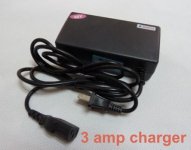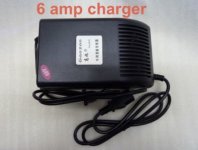imorton
1 kW
Hi Guys, I have two LifePo4 / Lithium-Ion chargers (the cheapie kind) and there is no instructions as to how to plug them in. I have two LifePo4 chargers, a SMALL 3amp model, and a LARGER 6amp charger.
Does anyone know the technical reasons/instructions on how to properly use (plug in and not destroy) these chargers…? From an engineering point of view, what did the mfg.'s recommend?


Should I be doing #1 or #2…?
#1) Do I plug in the wall first ?
#2) Do I plug in the battery first?
Thanks of your replies, IAN…
Does anyone know the technical reasons/instructions on how to properly use (plug in and not destroy) these chargers…? From an engineering point of view, what did the mfg.'s recommend?


Should I be doing #1 or #2…?
#1) Do I plug in the wall first ?
#2) Do I plug in the battery first?
Thanks of your replies, IAN…


